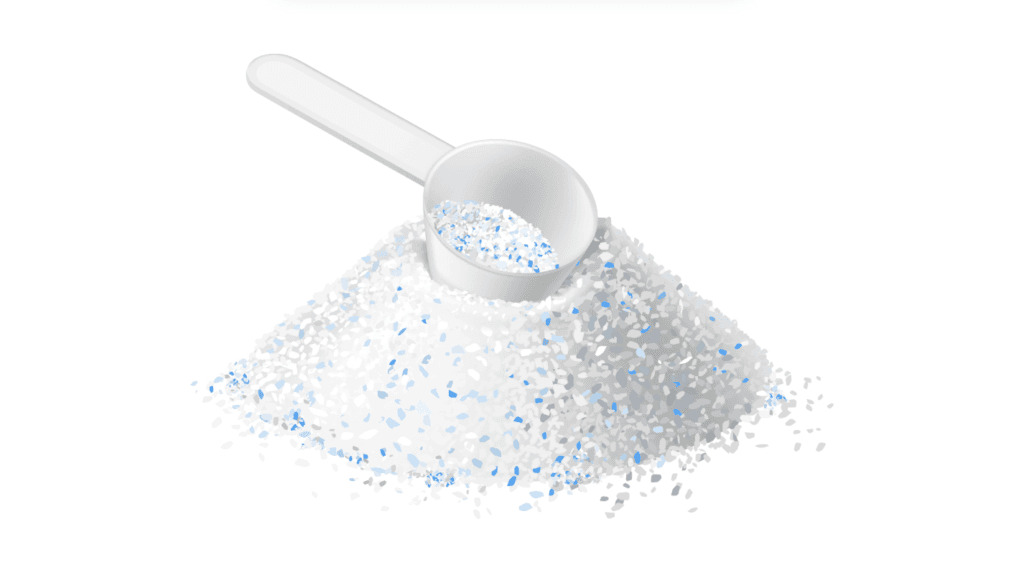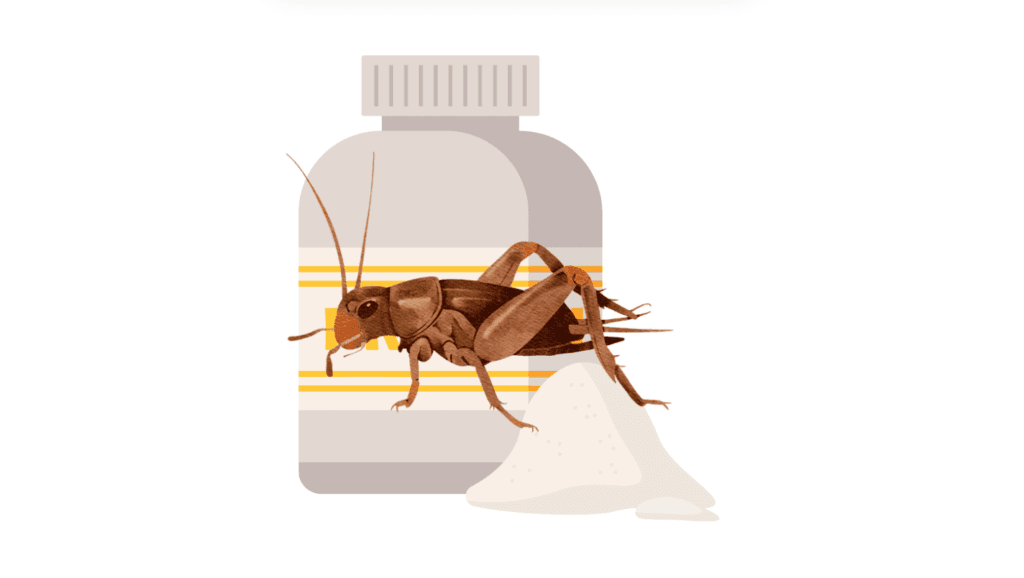Cricket flour has recently emerged as a popular alternative to traditional flour due to its high nutritional value and environmental benefits. If you’ve ever wondered, “Is it good to eat cricket flour?” you’re not alone. Cricket flour is rich in protein, fibre, and essential nutrients, making it an excellent choice for health-conscious individuals.
In this article, we’ll explore the top health benefits of eating cricket flour, its nutritional content, and how to incorporate it into your diet for better health and sustainability.
What is Cricket Flour?
Cricket flour is made by grinding dried crickets into a fine powder. It’s a sustainable protein source rich in vitamins, minerals, and amino acids. Unlike regular flour, cricket flour is gluten-free, making it an excellent option for people with gluten sensitivity or celiac disease. Its versatility makes it a great ingredient for baking, smoothies, and snacks, offering a nutritious boost to your meals.

I have written a strong research on it already, you can read it.
Cricket Flour Nutrition
Cricket flour is packed with protein, offering about 60% protein by weight. It’s a complete protein source containing all nine essential amino acids. Additionally, cricket flour contains vitamins such as B12 and minerals like iron, magnesium, and zinc. The fibre content also supports digestive health. Cricket flour is low in carbs and fat, making it healthier than many traditional flours. here’s why it is good to eat Cricket flour:
- Protein: Cricket flour is high in protein, providing all nine essential amino acids, making it a complete protein source.
- Vitamins & Minerals: It contains a range of vitamins, including B12, and minerals such as iron, zinc, and magnesium.
- Fibre: Cricket flour also provides dietary fibre, which is beneficial for digestion.
- Low in Carbs: Cricket flour has a relatively low carbohydrate content compared to other flour, making it suitable for low-carb diets.
Benefits of Cricket Flour
Eating cricket flour offers numerous health benefits. Its high protein content makes it an excellent choice for muscle growth and recovery. Cricket flour helps manage weight due to its low fat and carbohydrate content. It also supports gut health by providing dietary fibre, which aids digestion. Moreover, the vitamins and minerals in cricket flour help boost the immune system, promoting overall well-being.

1. High in Protein
One of the most significant benefits of eating cricket flour is its high protein content. It’s an excellent source of protein, containing about 60% protein by weight. Whether you want to build muscle or recover after exercise, cricket flour can help you meet your protein needs.
2. Supports Muscle Gain
Cricket flour is an excellent option if you’re working out regularly or focusing on building muscle. The protein in cricket flour helps with muscle repair and growth. Consuming cricket flour protein powder can assist athletes in boosting their protein intake and improving recovery.
3. Aids Weight Management
Cricket flour is low in fat and carbohydrates, making it an excellent choice for weight loss or management. The protein helps increase satiety, so you feel full longer and avoid overeating. It also supports fat loss by boosting metabolism.
4. Gut Health Benefits
The fibre content in cricket flour promotes a healthy gut. It helps improve digestion, regulate bowel movements, and support a balanced gut microbiome.
5. Boosts Immunity
Eating cricket flour regularly can help support your immune system. The high amount of vitamins, minerals, and antioxidants in cricket flour boosts your body’s defence system.
Is Cricket Flour Safe?

Cricket flour is generally considered safe for most people. However, those with shellfish allergies should avoid it since crickets are related to shellfish. It’s important to consult with a healthcare provider if you have allergies or underlying health conditions. Always check product labels for any cross-contamination with allergens. As with any new food, it’s best to gradually introduce cricket flour into your diet and monitor for adverse reactions.
Cricket Flour Taste
Cricket flour has a mild, nutty flavour that blends well with various foods. The taste is subtle, so it doesn’t overpower the dish. When used in baking or cooking, it gives a slightly earthy flavor, which some people find appealing. Cricket flour is versatile and can be used in recipes like muffins, cookies, protein bars, and smoothies. Its flavor complements sweet and savory dishes, making it easy to incorporate into your meals.
How to Use Cricket Flour
Cricket flour is incredibly versatile and can be used in various recipes. Whether baking, making smoothies, or preparing snacks, cricket flour can be easily incorporated into your diet. Its mild flavor makes it suitable for both sweet and savory dishes. Here are some of the most popular ways to use cricket flour to add protein and nutrition to your meals.
1. Baking with Cricket Flour
Cricket flour is a great substitute for regular flour in many baking recipes, including cookies, muffins, and pancakes. In most recipes, you can replace wheat flour with cricket flour, though you may need to adjust the amount to achieve the right texture. Cricket flour’s mild, nutty flavor adds a unique twist to your baked goods, boosting their protein content and nutritional value.
2. Smoothies and Protein Shakes
Cricket flour can easily be added to smoothies and protein shakes for an extra protein boost. Mix it with fruits, vegetables, and your favorite liquids to create a nutritious drink. Cricket flour blends well with other ingredients, giving your shake a smooth texture without overpowering the taste. It’s an excellent way to incorporate more protein into your diet, especially if you’re on the go or need a quick meal replacement.
3. Cricket Flour Recipes for Athletes
Athletes can greatly benefit from cricket flour, as it provides a high-quality source of protein essential for muscle recovery and energy. You can use cricket flour in the form of protein bars, energy bars, or supplements. These recipes make it easy to consume extra protein after a workout or during physical activity. Cricket flour-based snacks are perfect for fueling your body and helping you recover faster while building muscle strength.
4. Cricket Flour in Energy Bars and Snacks
Cricket flour is an excellent addition to homemade energy bars or snacks. Whether you’re looking for a healthy snack or need a pre-workout boost, cricket flour can help fuel your body with the protein it needs. Energy bars made with cricket flour are perfect for athletes or anyone looking to maintain their energy levels throughout the day. They provide a balanced mix of protein, fibre, and essential nutrients, making them a convenient and nutritious choice.
Is Cricket Flour Gluten-Free?

Yes, cricket flour is naturally gluten-free, making it a great alternative for those with gluten intolerance or sensitivity. Unlike wheat flour, which contains gluten, cricket flour is safe for people with celiac disease. It provides the same texture and consistency as traditional flour in many recipes, without the gluten. As always, check labels for cross-contamination risks, especially in products processed in facilities that also handle wheat flour.
Cricket Flour vs. Wheat Flour
The biggest difference between cricket flour and wheat flour is their nutritional content. Cricket flour contains protein, essential amino acids, and vitamins such as B12. It also contains fewer carbohydrates and fat than wheat flour, making it a better choice for low-carb or high-protein diets. Cricket flour is a more sustainable option, requiring fewer resources to produce. In contrast, wheat flour is more commonly used but lacks the added nutritional benefits of cricket flour.
Cricket Flour for Muscle Recovery
Cricket flour is an excellent food for muscle recovery due to its high-quality protein content. Protein is essential for repairing muscle fibres after exercise, and cricket flour provides all the amino acids necessary. Consuming cricket flour in protein shakes, smoothies, or snacks can help athletes and fitness enthusiasts recover faster and build muscle. It’s a great way to fuel your body after a workout and support long-term muscle growth.
Is Cricket Flour Eco-Friendly?
Yes, cricket flour is an eco-friendly protein source. Compared to traditional livestock, crickets require significantly fewer resources to produce. They need less water, feed, and land to make the same protein. Crickets also emit fewer greenhouse gases than other animals, like cows or chickens. Choosing cricket flour over animal-based proteins can help reduce your environmental footprint. It’s a sustainable food source that can contribute to a more eco-conscious diet.
How Healthy is Cricket Flour?
Cricket flour is incredibly healthy due to its rich nutritional profile. It’s a great source of complete protein, providing all nine essential amino acids. The vitamins and minerals in cricket flour, such as iron and B12, support overall health and vitality. It’s also high in fibre, which promotes digestive health. As a low-fat, low-carb flour, it’s a perfect choice for weight management and a balanced diet. It’s a nutrient-dense food that can enhance your health in multiple ways.
Final Thoughts
Is it reasonable to eat cricket flour? Absolutely! Cricket flour contains nutrients and offers a sustainable, eco-friendly protein alternative. Whether you’re looking to build muscle, improve gut health, or reduce your carbon footprint, cricket flour is an excellent choice. Its mild taste and versatility can be easily incorporated into your daily diet. Give it a try and experience the health benefits for yourself!

